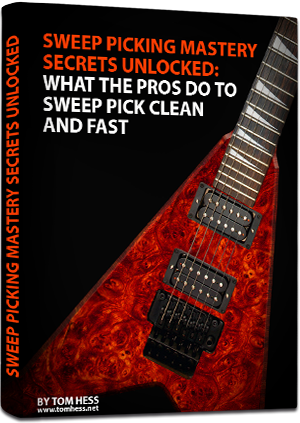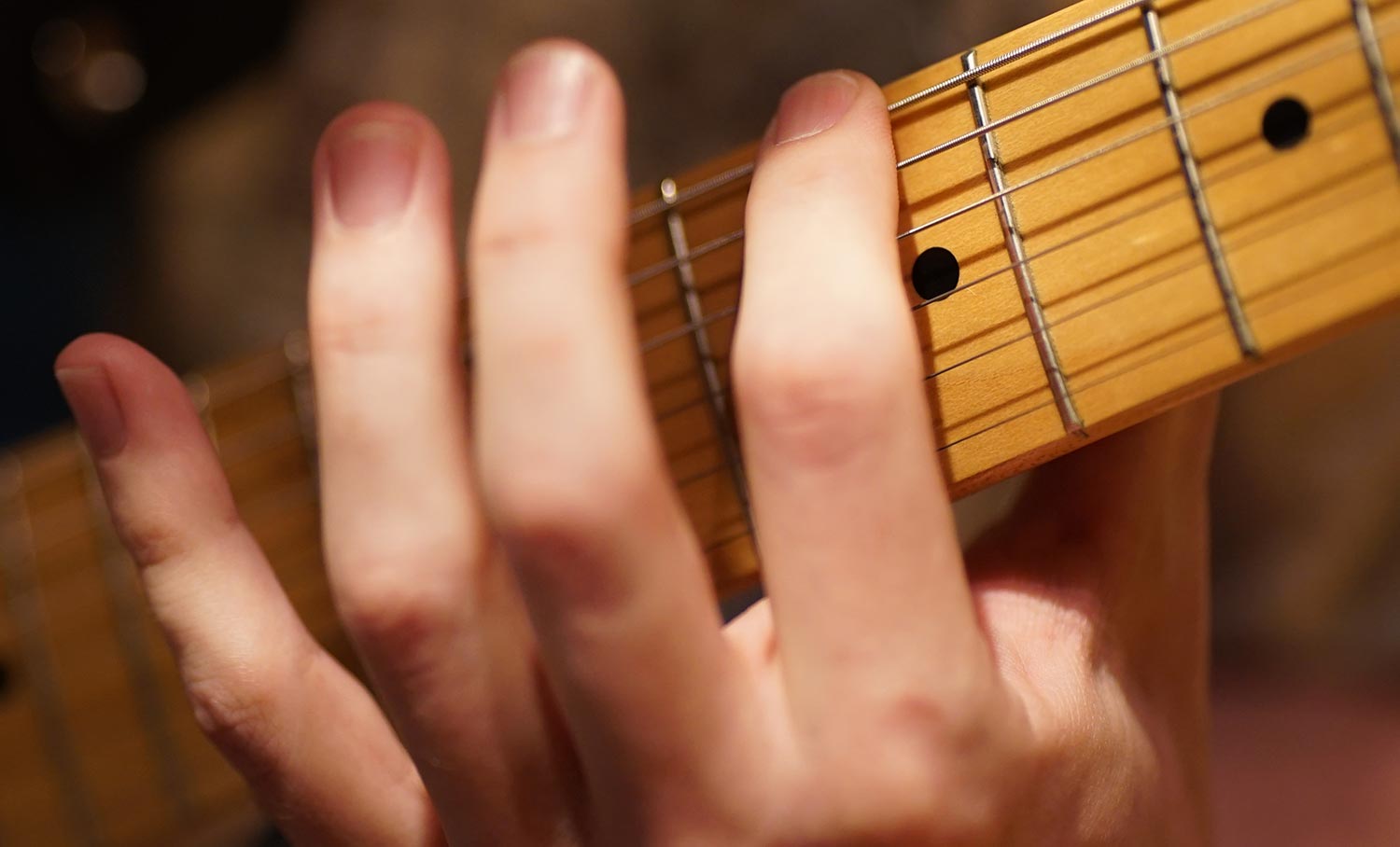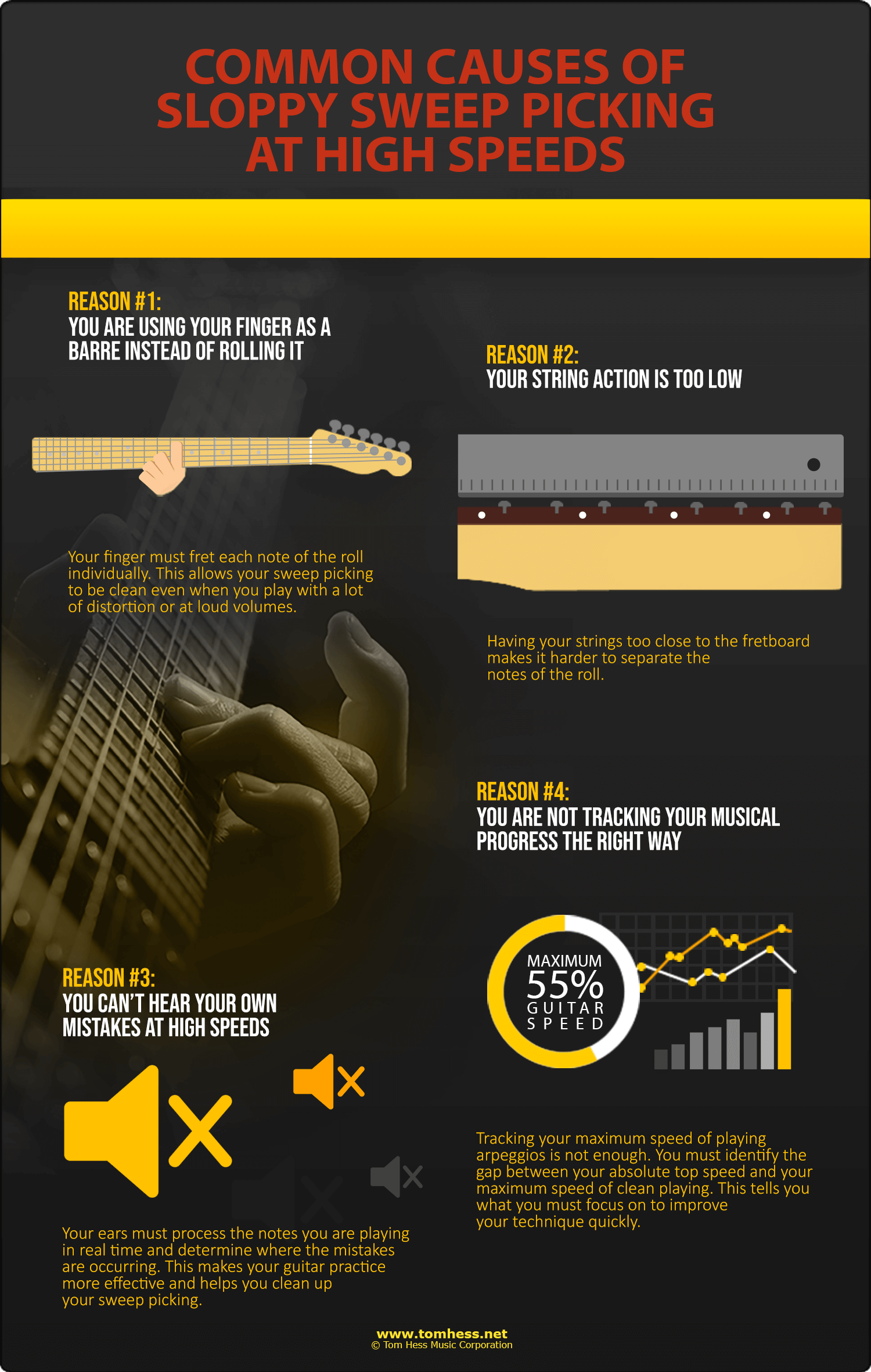How To Play Neoclassical Guitar Arpeggios Like A Pro (Without Being Advanced)

EMAIL TO GET ACCESS
By submitting your info, you agree to send it to Tom Hess Music Corporation who will process and use it according to their privacy policy.
If you like the sound of neoclassical guitar arpeggios...
(In the styles of Yngwie Malmsteen or Jason Becker...)
Then in this guitar technique article...
I’ll show you cool guitar arpeggio licks I bet you’ve never played before.
I’ll also show you how to create (your own) cool arpeggio guitar licks that go beyond simply playing a single guitar arpeggio up and down.
And fear not:
Even if you are not able to play guitar fast yet...
You’ll still be able to play these neoclassical guitar arpeggios without much difficulty.
Best of all:
Practicing them will level-up your guitar technique.
(As well as make it easier to play more advanced guitar arpeggio licks.)

EMAIL TO GET ACCESS
By submitting your info, you agree to send it to Tom Hess Music Corporation who will process and use it according to their privacy policy.
Ready to have fun?
Then watch this guitar arpeggio video that shows you how to create pro-sounding guitar arpeggio licks:
Now that you know the basics of creating guitar arpeggio licks, let’s go deeper into the world of neoclassical guitar arpeggios.
Here are 5 more ideas for creating guitar licks using guitar arpeggios (even if you don’t have advanced guitar technique yet):
Guitar Arpeggio Licks Tip #1: Play Licks In Only One Direction
For example: play arpeggios only ascending in pitch... or only descending in pitch.
Why do this?
It’s a very simple (and cool) way to add variety to your guitar arpeggio licks that sounds different than simply playing the same guitar arpeggio shape up and down.
By playing your neoclassical guitar arpeggios in only one direction...
You create an unexpected break in the pattern of the arpeggio, which builds musical tension and makes your guitar licks sound more pro (even when you aren’t able to play guitar fast yet).
Take any arpeggio lick you already know and create variations on it by playing some arpeggios ascending only, others – descending only and keeping others ascending and descending.
Here is what this looks like:
Question: “Tom Hess, when I try to play my arpeggio guitar licks this way, I hear a lot of string noise. What’s the best way to control sloppy noise in my guitar technique when playing guitar arpeggios?”
Answer: Practice muting excess guitar technique string noise using your picking hand’s thumb and your fretting hand index finger.
Like this:
Rest your picking hand’s thumb on the lower (thicker) strings. This guitar technique is called ‘thumb muting’. And it works like the name implies.
You slide the thumb up and down the strings as you play, keeping the thicker strings free of string noise.
And what about muting the thicker strings when you play arpeggio guitar licks (such as what you’ll need to do when you are descending arpeggios in only 1 direction)?
For this, your fretting hand index finger needs to rest on the higher (thinner) guitar strings - thus helping you play your neoclassical guitar arpeggios cleanly.
Here is what it looks like:

Use both techniques to mute excess string noise in your guitar licks (and clean up your guitar technique).
Bonus tip:
Take any of the arpeggio guitar licks you already know and create variations on them by playing some arpeggios ascending only, others – descending only and keeping others ascending and descending.
Enjoy the fun!
Guitar Arpeggio Licks Tip #2: Combine Arpeggios With Tremolo
Tremolo picking (which means rapid picking of one note back and forth) is a fantastic technique to combine with guitar arpeggio licks.
Why do it?
For one thing, it’s a sound you rarely hear in neoclassical guitar arpeggios (which makes your guitar licks sound more original and creative right away). It also makes your guitar licks sound very aggressive!
Additionally...
Tremolo picking during your arpeggio guitar licks helps you clean up sloppy sweep picking.
So, how do you actually combine guitar arpeggios with tremolo?
Like this:
Play a 5-string A major arpeggio in root position. Sweep up to the 3rd string, then play a tremolo on that note.
At this point, you should only hear the note on the third string. Repeat this exercise until you can do it cleanly.
Then practice sweeping up to other notes in the arpeggio and stopping on them with tremolo as well.
Here is an example of this sweep picking variation in action:
Question: “Tom Hess, should I practice sweep picking with a clean tone or distortion?”
Answer: Spend most of your time with distortion. The reason is: you want to practice with the tone you’ll be using in your playing most of the time.
And given that you are reading this guitar technique article about neoclassical guitar arpeggios, you probably like the sound of guitar licks (and guitar arpeggios) played with distortion.
So, practice with that same sound when you are working on guitar technique. This will also help you to sound clean when you are learning to play guitar fast.
That said, do not practice with effects. Effects mask inconsistencies in your pick attack and articulation. So, learn to play guitar fast (and make your neoclassical guitar arpeggios sound good) without effects.
Then, add effects for fun while playing and you’ll sound even better!
Question: “But Tom Hess, doesn't distortion hide mistakes?”
Answer: No, it doesn't. At least not in the way most guitarists think. Distortion ‘does’ make it easier to play with weak pick attack, that’s for sure. But as far as hiding sloppy mistakes (like sloppy string noise)? It makes it many times louder and easier to hear.
It’s ‘clean’ tone that hides most of the mistakes that make your guitar licks sound sloppy when you play guitar fast.
That is yet another reason why you should spend most of your time practicing guitar arpeggios with distortion.

Guitar Arpeggio Licks Tip #3: Learn To Use Triad Inversions
One of the most failsafe ways to make your guitar arpeggios sound better is to practice playing them in multiple positions on the fretboard.
How do you do this?
 14 Day Guitar Speed Mini Course
14 Day Guitar Speed Mini CourseDiscover the most effective ways
to quickly build your guitar speed.
 Free Guitar Speed Secrets Video
Free Guitar Speed Secrets VideoLearn the speed building secrets
that most guitarists don't know.
 Strengthen Your Guitar Technique
Strengthen Your Guitar TechniqueDiscover how to play with cleaner,
more accurate guitar technique.
By playing all the inversion shapes of the guitar arpeggio you are practicing.
How do you find the inversion shapes?
Well, that is beyond the scope of this guitar technique article (but a great guitar teacher can help you with this very easily).
That said, here is what you need to know about neoclassical guitar arpeggios in inversions:
Many of them contain ‘finger rolling’.
What’s finger rolling?
It happens when you are playing more than one note on the same fret on several strings...
… with the same finger.
Finger rolling not only appears in many guitar arpeggio licks you’ll encounter as you are learning to play guitar fast...
... it happens in some scale sequences too.
And the hardest part about playing finger rolling guitar arpeggios is separating the notes and not letting them bleed together.
Many guitarists (even those who play scales at eye-popping speeds) struggle with this technique and avoid it as much as they can.
But you don't have to be one of them.
Watch this video to see how to practice finger rolling the right way:
The most interesting thing about finger rolling is...
Once you get it down (i.e. make it part of your guitar technique and integrate it into your neoclassical guitar arpeggios)...
It becomes the easiest guitar technique to play guitar fast with.
In fact...
Finger rolling is the secret behind the unofficial, undocumented and completely meaningless 2000 notes per minute guitar speed record.
I set it among guitar teachers at the music store I taught at many years ago.
Some of those guys were faster than me with picking, legato or tapping... but I did finger rolling way faster & cleaner than all of them.
So, it’s worth it to put in the time to master this skill if learning to play guitar fast is one of your goals.
Guitar Arpeggio Licks Tip #4: Mix Triads With 7th Chord Shapes
7th chords not only add a ton of color to your neoclassical guitar arpeggios...
But they also (ironically) make it easier to play guitar fast when you play guitar arpeggios.
I say “ironically”, because even though 7th chords are a bit more complicated in terms of music theory...
... they are quite a bit easier to play in terms of guitar technique (especially when it comes to neoclassical guitar arpeggios).
What 7th chord shapes should you use?
The most important 7th chord guitar arpeggios to know are:
Major 7th chords - that are built using notes 1 3 5 and 7 of the major scale.
Minor 7th chords - that are built using notes 1 b3 5 b7 of the major scale.
Major minor 7th chords (also called ‘dominant 7th’ chords’) – built out of notes 1 3 5 b7 of the major scale.
Half diminished 7th chords – that are built using notes 1 b3 b5 b7 of the major scale.
And of course, the most important chord to build neoclassical guitar arpeggio licks out of:
The fully diminished 7th chords – building using notes 1 b3 b5 bb7 of the major scale.
Here is a video demonstration of how to use 7th chords to improve your guitar technique and play awesome guitar arpeggio licks:
Question: “Tom Hess, you keep using the terms “chords” and “arpeggios” interchangeably. Do these terms mean the same thing?”
Answer: These 2 terms are similar, and one is a more nuanced version of the other. A chord is simply a collection of several pitches played together. An arpeggio refers to a way a chord is played. A guitar arpeggio means playing a chord one note at a time (without notes bleeding or ringing together).
Said another way, every arpeggio is a chord. But not every chord is played as an arpeggio. (A chord can also be strummed, for example.)
Guitar Arpeggio Licks Tip #5: Integrate Neoclassical Guitar Arpeggios With Melodies
You may not think that guitar arpeggios have much to do with melodic and soulful playing...
But they do.
Here is one of the best ways to integrate arpeggio guitar licks with melodies:
1. Start with a simple melody (which you can either improvise on guitar or transcribe from any singer you like).
2. Think of the notes of the melody as sign posts that you can connect ‘using’ guitar arpeggio licks.
You can do this whether you play guitar fast or not.
Here is an example of what I mean:
And of course, you can use this same idea using scale sequences and other guitar techniques (such as 2-hand tapping, string skipping, etc.), not only guitar arpeggios.
This will help you come up with awesome guitar licks that sound pro.
Now that you understand how to play neoclassical guitar arpeggios in cool ways and create cool guitar arpeggio licks out of them (without having to play guitar fast)...
Let me show you how to ‘actually’ play guitar fast with guitar arpeggios and learn to sweep pick like a pro, even if you don’t have a lot of time to practice. I show you how in my free guitar technique guide called: Sweep Picking Mastery Secrets Unlocked: What The Pros Do To Sweep Pick Clean And Fast. Download it today and discover the sweep picking tricks most guitar players will never know.


Want to finally reach your guitar playing goals? Learn how with the best rock and metal guitar lessons online.

